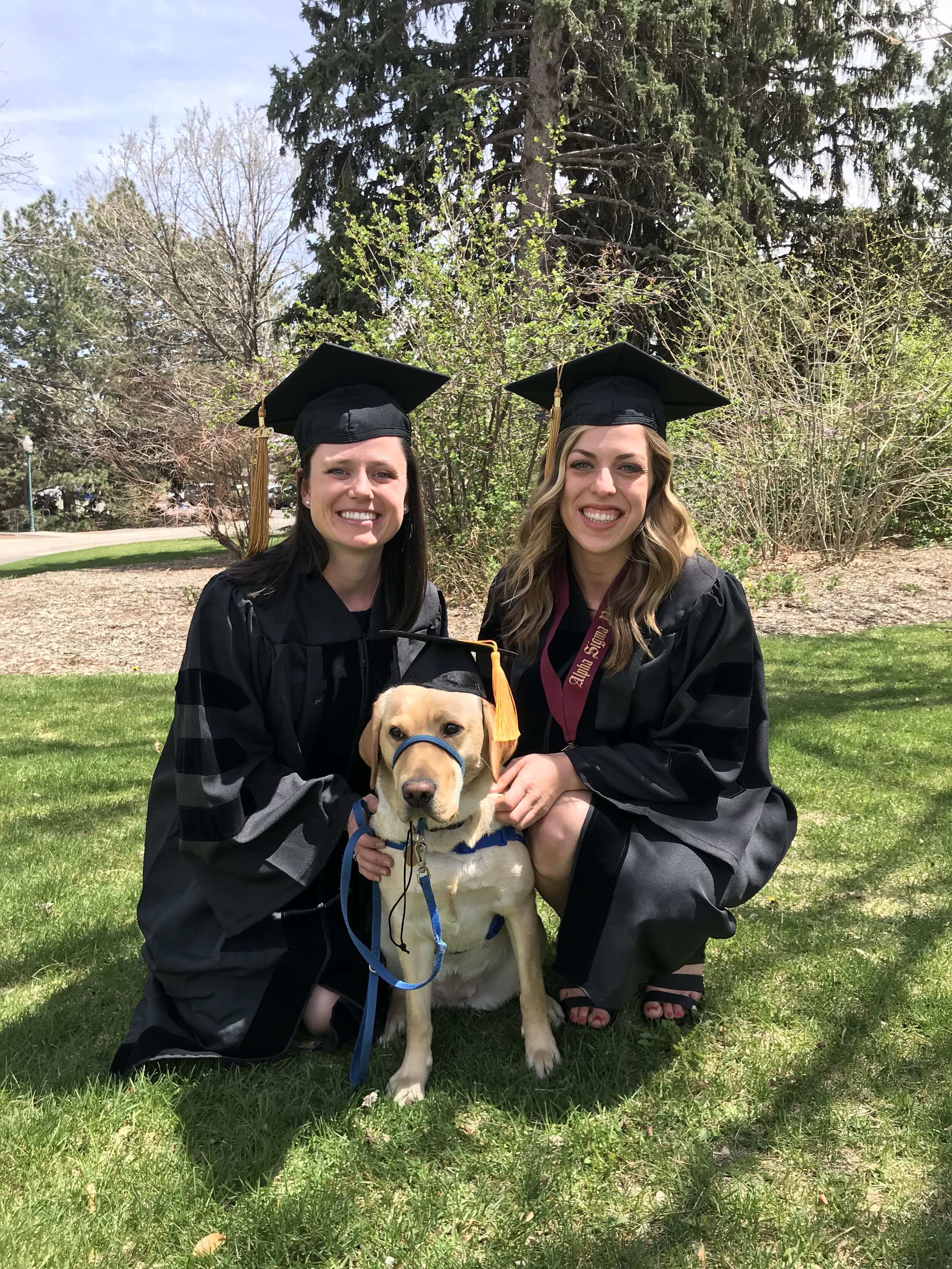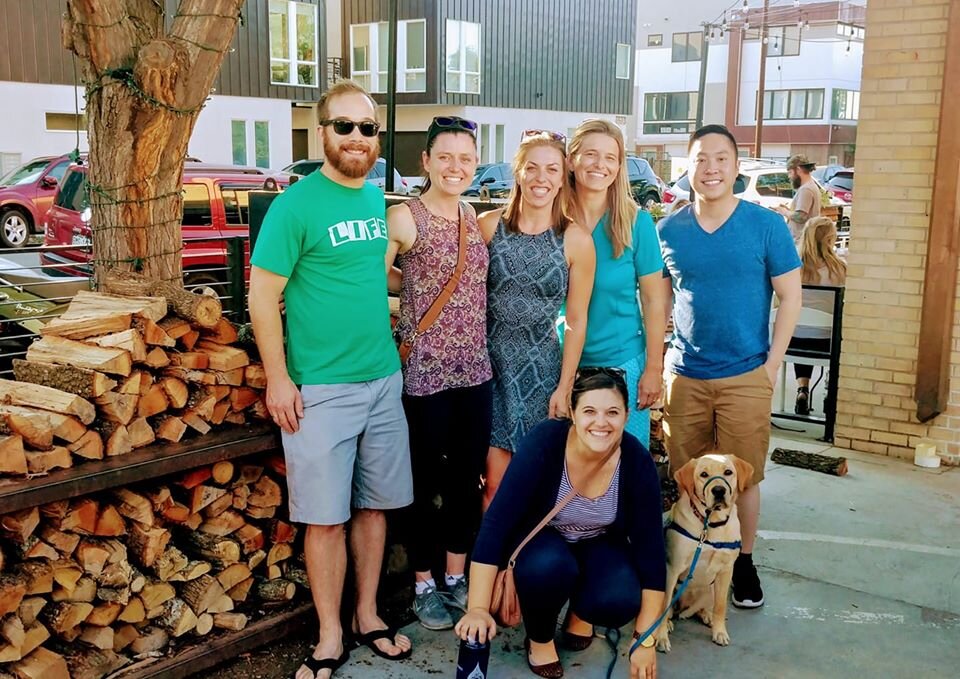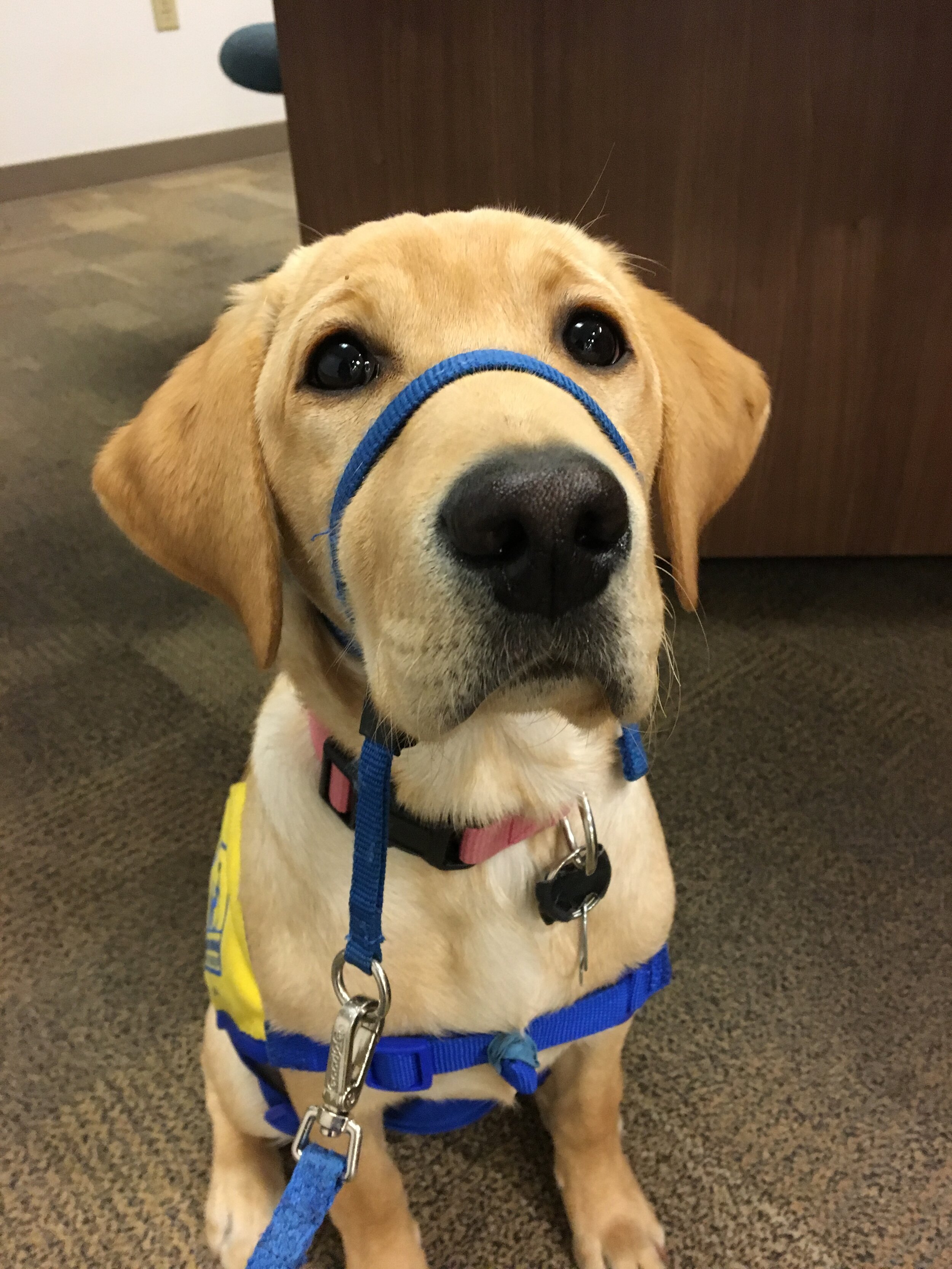Companions for Life
Have you ever seen a cute service dog wearing a vest at the airport or your local coffee shop and thought to yourself: “I wish my dog was that well behaved,” or “why do they get to bring their dog here,” or maybe even “I could really use a dog like that to help in my daily life, I wonder how I could get one”? I used to wonder this too, until I had the chance to raise a labrador retriever service puppy named Nubbin.
While I was in physical therapy school, I had a unique opportunity to volunteer with a small group of classmates to raise Nubbin with the organization Canine Companions for Independence (CCI). As volunteer puppy raisers, we were required to provide safe environments for our dog to be socialized and learn 30 basic commands-- from Sit and Stay, to Shake, and “Lap” (placing her front paw on your lap for some cuddles) . At Regis, we had an additional challenge of raising Nubbin with a team of 10 students from various health professions. Our team included students from the schools of Physical Therapy, Occupational Therapy, Pharmacology, Counseling, and Undergrad Exercise Science. As a team of inter-professional healthcare providers, we learned to work through the challenges of raising a young puppy, gain a deeper understanding of various health fields, and engage in discussions on how to improve inter-professional communication and teamwork in real-life work settings.
Nubbin gets a team



My team and I raised Nubbin for the first year and a half of her life. We took her to class, the gym, grocery stores, happy hour, the movies, and of course the park and backyard for some much deserved play time. She even got to walk down the aisle at graduation with us (with her own graduation cap). At this point, after months of care and learning together, we said our tearful goodbyes and sent her back to her home in California where she was further mentored by professional dog handlers. Here, they taught her more difficult skills like how to open doors, turn on and off lights, and provide more advanced services for their future owners. At first, Nubbin’s report card noted that she was a little shy and anxious with new environments, but was learning quickly and loved to cuddle. This past fall, she graduated from puppy school, which is a huge accomplishment, as the passing rate is less than 50%. She is now working in a police facility in California to help kids who have suffered traumatic experiences. You can find her on Instagram @k9nubbin to learn about how she is helping her community heal in times of need. Some of Nubbins classmates have gone on to other locations to help adults with limited physical mobility and kids with sensory processing disorders.
My Vest Means I am Working
You may see working dogs with their owners out in the community. These dogs will typically be wearing a vest that designates them as a service dog. Please remember that these are working dogs and should only be approached if you have spoken with their owner and received permission first. Distractions from their job could be dangerous for both the dog and their owner. Both the dog and the owner have received very specific and challenging training to ensure they are a good fit and can meet each others needs.




As Nubbin has reached the pinnacle of her training, I am reminded of the importance of service dogs. Aside from the joy that having a dog brings, service dogs assist with emotional and physical tasks to empower their owner with greater independence and confidence. If you have a dog at home, take some time to consider the joy and activity that they may bring to your life. If you feel like you could benefit from having a service dog in your life, or would like to volunteer or donate, you can learn more at https://www.cci.org/.


